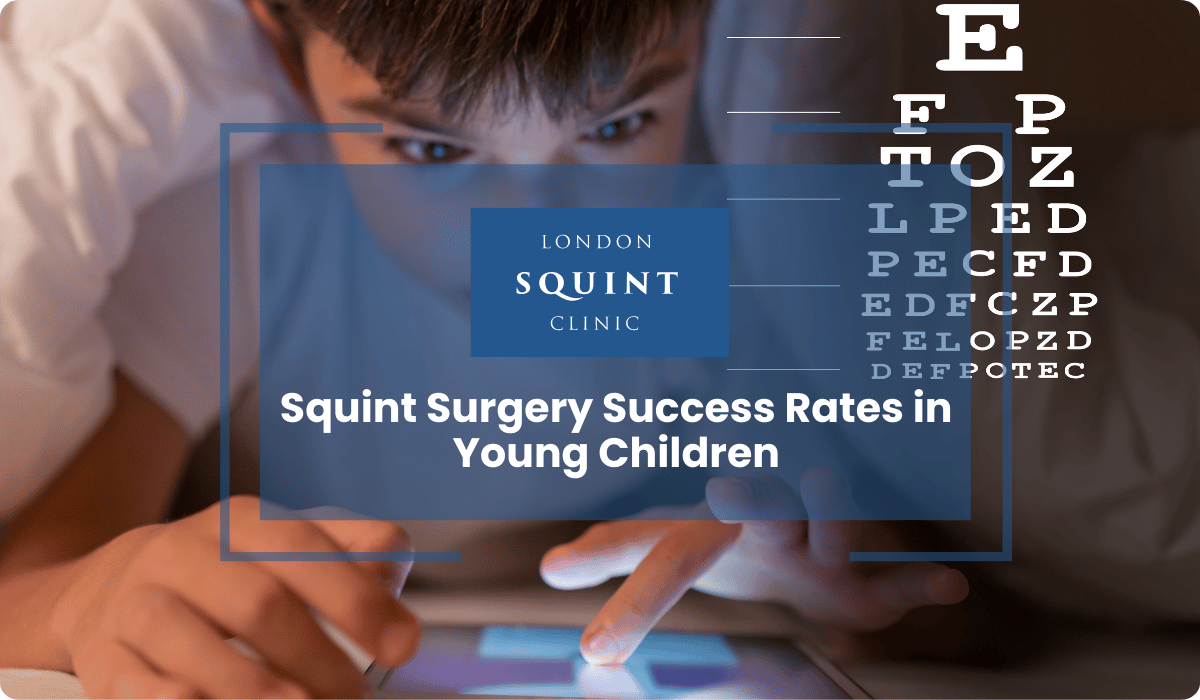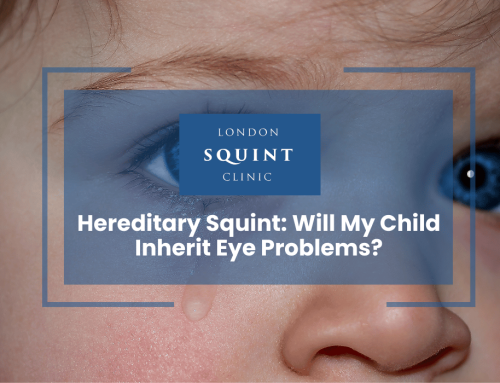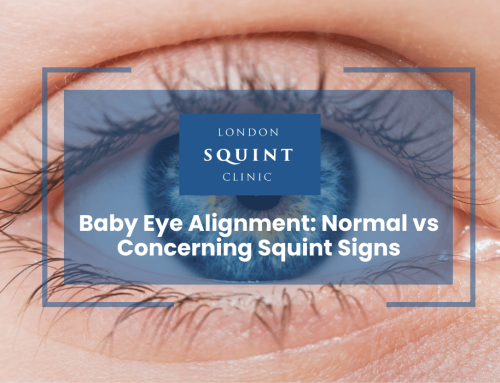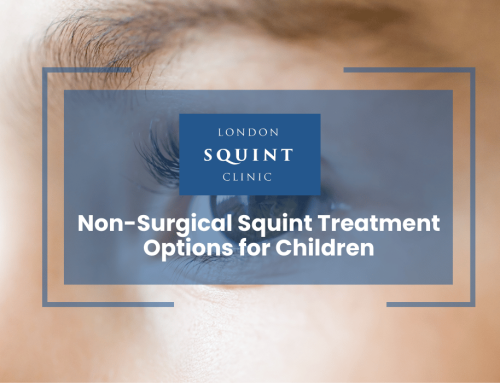Squint Surgery Success Rates in Young Children
Essential Insights for Parents Considering Squint Surgery
- Pediatric squint surgery success rates range from 60-80% with a single procedure, varying by squint type (esotropia: 60-75%, exotropia: 50-70%).
- Early intervention, particularly before age 2 for infantile esotropia, yields better functional outcomes for binocular vision development.
- Approximately 20-30% of children require additional surgery, which should be viewed as part of comprehensive management rather than failure.
- Pre-surgical treatment of amblyopia and refractive errors significantly improves outcomes.
- Recovery typically takes 1-2 weeks, with most children returning to school within 7-10 days.
- Long-term follow-up is essential, as stability varies by squint type (infantile esotropia: 20-40% reoperation rate, intermittent exotropia: 30-50% recurrence).
- Both visual function and psychological wellbeing should be considered when determining if and when surgery is appropriate.
Squint Surgery Success Rates in Young Children
Squint (strabismus) affects approximately 2-4% of children in the UK, causing misalignment of the eyes that can impact both vision development and psychological wellbeing. For many families, understanding the success rates of squint surgery becomes crucial when considering treatment options for their child. This comprehensive guide explores the effectiveness of pediatric squint surgery, factors influencing outcomes, and important considerations for parents navigating this treatment journey. With advances in surgical techniques and careful patient selection, squint surgery offers promising results for many children, though success rates vary depending on several key factors including the type of squint, age at intervention, and underlying causes.
Table of Contents
- Understanding Pediatric Squint: Types and Causes
- How Successful is Squint Surgery in Children?
- Factors Affecting Strabismus Surgery Outcomes
- Age Considerations for Childhood Eye Muscle Surgery
- The Squint Surgery Procedure: What Parents Should Know
- Recovery and Follow-up After Pediatric Strabismus Correction
- Long-term Results and Potential Need for Re-operation
- Making the Decision: When Surgery is Right for Your Child
Understanding Pediatric Squint: Types and Causes
Pediatric squint (strabismus) encompasses several distinct conditions characterised by misalignment of the eyes. The primary types include esotropia (inward turning), exotropia (outward turning), hypertropia (upward deviation), and hypotropia (downward deviation). Each type presents unique challenges and requires specific surgical approaches.
Congenital strabismus appears within the first six months of life and often stems from neurological factors affecting eye muscle control. Acquired squints may develop later due to refractive errors, cranial nerve palsies, or other ocular conditions. Accommodative esotropia, common in far-sighted children, occurs when the eyes turn inward during visual focusing efforts.
Understanding the underlying cause is crucial for determining appropriate treatment. Some squints result from muscle dysfunction, while others stem from nerve supply issues or refractive problems. Certain conditions like Duane syndrome or Brown syndrome involve specific mechanical restrictions of eye movements that require specialised surgical techniques.
Early detection remains vital, as untreated squint can lead to amblyopia (lazy eye) when the brain suppresses vision from the misaligned eye to avoid double vision. This adaptation, while preventing diplopia, can permanently affect visual development if not addressed during the critical period of visual development in early childhood.
How Successful is Squint Surgery in Children?
The success rates for pediatric squint surgery are generally encouraging, with overall success rates ranging between 60-80% for a single procedure. However, these figures vary significantly depending on the specific type of strabismus and individual factors. For straightforward horizontal muscle surgeries in otherwise healthy children, success rates can reach 70-80% with a single operation.
Esotropia (inward turning) surgeries typically show success rates of 60-75% after initial surgery, with higher rates for acquired rather than congenital forms. Exotropia (outward turning) correction demonstrates slightly lower initial success rates of 50-70%, with a higher tendency for recurrence over time. Complex vertical deviations or those associated with syndromes may have more modest success rates of 40-60%.
It’s important to define what constitutes “success” in strabismus surgery. Ophthalmologists typically consider an alignment within 10 prism dioptres of straight as a good outcome. Perfect alignment may not always be achievable with a single procedure, particularly in complex cases. Additionally, functional success includes improvements in binocular vision, depth perception, and elimination of diplopia (double vision) when applicable.
Research indicates that approximately 20-30% of children may require additional surgery to achieve optimal results. This should not be viewed as failure but rather as part of the comprehensive management approach for certain types of strabismus. The need for multiple surgeries is more common in congenital cases, large-angle deviations, and certain specific conditions like Duane syndrome or infantile esotropia.
Factors Affecting Strabismus Surgery Outcomes
Multiple factors influence the success of childhood strabismus surgery, with the type and magnitude of the squint being primary determinants. Large-angle deviations typically have lower single-surgery success rates compared to smaller deviations. Similarly, constant squints often present greater surgical challenges than intermittent ones.
The duration of the squint significantly impacts outcomes. Children with long-standing strabismus may have developed sensory adaptations that complicate the restoration of binocular vision, even with perfect anatomical alignment. Early intervention, particularly for infantile esotropia, shows better functional outcomes when performed before age 2.
Pre-existing amblyopia (lazy eye) can affect surgical results, as the visual cortex may have adapted to suppress vision from the affected eye. Successful amblyopia treatment before surgery improves outcomes. Similarly, uncorrected refractive errors must be addressed with appropriate glasses before surgical intervention, particularly for accommodative components.
Previous eye surgeries or trauma can create scarring and altered anatomy, potentially complicating subsequent procedures. Neurological conditions affecting muscle tone or control, such as cerebral palsy or cranial nerve palsies, may reduce success rates and increase the likelihood of requiring multiple surgeries.
Surgeon experience and surgical technique selection also play crucial roles. Adjustable suture techniques, though more challenging in young children, allow fine-tuning of alignment in the immediate post-operative period, potentially improving outcomes in complex cases. The presence of A or V patterns, where the deviation varies in different gaze positions, requires specific surgical planning to address these variations effectively.
Age Considerations for Childhood Eye Muscle Surgery
The optimal timing for squint surgery varies depending on the type of strabismus and individual circumstances. For infantile esotropia (inward turning present from birth), research supports early intervention between 6-12 months of age to maximise the potential for developing binocular vision and depth perception. Studies show that surgery before 24 months of age yields better sensory outcomes than delayed intervention.
For accommodative esotropia, which relates to focusing efforts, non-surgical approaches with glasses are typically tried first, with surgery considered only for the non-accommodative component that persists despite optimal spectacle correction. This decision usually occurs after age 2-3 years, once the refractive status has stabilised.
Intermittent exotropia (outward turning) management timing remains somewhat controversial. Many ophthalmologists prefer to observe these cases if well-controlled, intervening surgically when the frequency increases or binocular vision deteriorates, often between ages 4-6 years. This allows for better cooperation with pre-operative measurements and post-operative exercises.
Practical considerations also influence timing decisions. Very young children may not cooperate fully with precise pre-operative measurements, potentially affecting surgical planning. Conversely, delaying surgery until school age may allow psychological impacts to develop, including reduced self-confidence and social difficulties.
The critical period for visual development extends approximately through age 8-9 years, making earlier intervention generally preferable for conditions affecting visual development. However, successful outcomes can still be achieved in older children and even adults, though with potentially reduced functional improvements in binocular vision.
The Squint Surgery Procedure: What Parents Should Know
Pediatric squint surgery is typically performed under general anaesthesia as a day case procedure, lasting between 45-90 minutes depending on complexity. The operation involves making a small incision in the conjunctiva (the clear membrane covering the white of the eye) to access the eye muscles. No incisions are made on the visible external parts of the eye, and the eyeball itself is never removed during the procedure.
The surgeon will either strengthen or weaken specific eye muscles to correct the misalignment. Weakening procedures include recession (moving the muscle attachment further back) while strengthening involves resection (removing a portion of the muscle to create a tighter effect) or advancement (moving the attachment point forward). The specific muscles targeted depend on the direction of the squint—medial rectus for esotropia, lateral rectus for exotropia, and superior or inferior muscles for vertical deviations.
Modern techniques include adjustable sutures for older cooperative children, allowing fine-tuning of the alignment in the early post-operative period. However, this approach is less commonly used in young children who may not cooperate with adjustment procedures. Minimally invasive techniques with smaller incisions have reduced recovery time and post-operative discomfort.
Before surgery, detailed measurements of the squint in different gaze positions and distances are taken to create a customised surgical plan. These measurements may be repeated multiple times to ensure consistency. Parents should expect their child to have red eyes following surgery, with some discharge and discomfort that typically resolves within 7-10 days.
The procedure carries a very high safety profile, with serious complications being extremely rare. Minor complications may include temporary double vision, over or under-correction, and conjunctival redness or scarring. Infection risk is minimal but requires prompt attention if suspected.
Recovery and Follow-up After Pediatric Strabismus Correction
The immediate recovery period following pediatric squint surgery typically spans 1-2 weeks. Children usually experience mild to moderate discomfort rather than severe pain, which can be managed with standard paracetamol or ibuprofen. The eyes appear red and may be watery or slightly swollen for several days post-operation. Most children can return to school within 7-10 days, though swimming should be avoided for approximately 2-3 weeks to prevent infection.
Antibiotic and anti-inflammatory eye drops are prescribed for 2-4 weeks following surgery. Parents should expect some resistance from younger children during drop administration; various techniques such as administering drops while the child is sleeping or using gentle restraint may be necessary. Cold compresses can help reduce swelling and provide comfort during the first 48 hours.
The initial post-operative follow-up appointment typically occurs within one week of surgery to assess healing and preliminary alignment. Subsequent appointments are scheduled at approximately 6 weeks, 3 months, 6 months, and 12 months, though this schedule may vary based on individual recovery patterns and complications.
Parents should monitor for warning signs requiring urgent attention, including increasing pain rather than improving comfort, yellow or green discharge suggesting infection, or significant swelling that worsens after the first few days. Persistent double vision beyond 2-3 weeks may indicate the need for adjustment of glasses prescription or further intervention.
During the recovery period, children may temporarily revert to head tilting or turning positions they used before surgery to compensate for their vision. This usually resolves as the brain adapts to the new eye alignment. Some children experience temporary over-correction (eyes turning in the opposite direction), which often settles within weeks as the muscles heal and adapt.
Long-term Results and Potential Need for Re-operation
Long-term outcomes of pediatric squint surgery show that approximately 60-70% of children maintain satisfactory alignment with a single procedure. However, the stability of results varies significantly by squint type. Infantile esotropia has a re-operation rate of 20-40% over time, while intermittent exotropia shows higher recurrence rates of 30-50% within 5-10 years after initial correction.
Several factors influence the long-term stability of surgical results. Children with good binocular potential who develop functional binocular vision after surgery typically maintain better alignment. Conversely, those with poor sensory fusion mechanisms face higher recurrence risks. The presence of amblyopia, even when treated, can affect long-term stability, as can significant refractive errors that change during childhood growth.
Re-operation, when necessary, should not be viewed as a failure but rather as part of the comprehensive management approach for certain types of strabismus. Second surgeries often achieve stable results, particularly when performed after growth-related changes have stabilised. The timing between surgeries typically ranges from 6-12 months to allow complete healing and accurate assessment of residual deviation.
Long-term follow-up remains essential even after successful surgery. Annual examinations until visual maturity (approximately age 9-10) help monitor alignment, detect subtle changes, and address any developing refractive errors. Some children require long-term maintenance with glasses or prisms even after successful surgery, particularly those with accommodative components or residual small-angle deviations.
Research indicates that successful alignment in childhood contributes to better psychosocial outcomes, including improved self-esteem and social interactions. However, parents should understand that perfect cosmetic alignment does not always correlate with functional binocular vision, which depends on early intervention and the brain’s ability to integrate input from both eyes.
Making the Decision: When Surgery is Right for Your Child
Deciding whether squint surgery is appropriate for your child involves careful consideration of multiple factors. Non-surgical approaches should typically be explored first, particularly for accommodative esotropia, which often responds well to glasses alone. Amblyopia treatment with patching or atropine drops may be necessary before or alongside surgical intervention to maximise visual potential in the affected eye.
The impact of the squint on your child’s visual function and psychological wellbeing should be primary considerations. Constant deviations that affect binocular vision development, cause double vision, or result in abnormal head postures generally warrant earlier surgical intervention. Similarly, if your child shows signs of social withdrawal, reduced confidence, or experiences teasing related to their eye appearance, these factors may influence timing decisions.
A thorough discussion with your pediatric ophthalmologist should include realistic expectations about outcomes. Understanding that perfect alignment may require multiple procedures in some cases, and that glasses may still be needed post-operatively, helps establish appropriate expectations. The surgeon should clearly explain the specific success rates for your child’s particular type of squint rather than quoting general statistics.
Consider seeking a second opinion for complex cases or if you feel uncertain about recommendations. Specialist pediatric ophthalmologists with specific expertise in strabismus surgery can provide valuable insights, particularly for unusual or complicated presentations. Parent support groups can also offer practical perspectives from families who have navigated similar decisions.
Finally, timing considerations should balance the benefits of early intervention for visual development against practical aspects like measurement accuracy and post-operative cooperation. For most types of childhood strabismus, earlier intervention within the critical period of visual development (before age 8-9) offers the best potential for functional as well as cosmetic improvement. However, each child’s situation requires individualised assessment rather than applying general rules.
Frequently Asked Questions
What is the success rate of squint surgery in children?
The overall success rate for squint surgery in children ranges between 60-80% for a single procedure. Success rates vary by squint type: esotropia (inward turning) surgeries show 60-75% success, exotropia (outward turning) correction demonstrates 50-70% success, and complex vertical deviations have more modest success rates of 40-60%. Approximately 20-30% of children may require additional surgery to achieve optimal results, particularly in congenital cases, large-angle deviations, and specific conditions like Duane syndrome.
At what age should a child have squint surgery?
The optimal timing for squint surgery depends on the type of strabismus. For infantile esotropia, surgery between 6-12 months of age is recommended to maximize binocular vision development. Accommodative esotropia is typically addressed with glasses first, with surgery considered after age 2-3 years if needed. Intermittent exotropia surgery is often performed between ages 4-6 years when the condition worsens. Generally, earlier intervention within the critical period of visual development (before age 8-9) offers better functional outcomes.
How long does it take to recover from squint surgery?
Recovery from pediatric squint surgery typically takes 1-2 weeks. Children usually experience mild to moderate discomfort managed with standard pain relievers. The eyes appear red, watery, and slightly swollen for several days. Most children can return to school within 7-10 days, though swimming should be avoided for 2-3 weeks. Antibiotic and anti-inflammatory eye drops are used for 2-4 weeks following surgery. Complete healing and stabilization of eye alignment may take several months.
Will my child need glasses after squint surgery?
Many children will still need glasses after squint surgery, particularly those with accommodative components or significant refractive errors. Surgery corrects the muscle alignment but doesn’t address underlying focusing issues. For accommodative esotropia, glasses typically remain necessary even after successful surgery. The need for glasses may change as the child grows, requiring regular follow-up appointments to adjust prescriptions. Some children may eventually reduce their dependence on glasses, while others will need them long-term.
What are the risks of squint surgery in children?
Squint surgery in children carries a high safety profile with rare serious complications. Potential risks include under-correction (residual squint) or over-correction (eyes turning in the opposite direction), which occurs in 20-30% of cases. Temporary double vision is common initially but usually resolves within weeks. Other risks include conjunctival scarring, infection (very rare at less than 1%), and allergic reactions to medications. The risk of vision loss from the procedure itself is extremely rare (less than 1 in 10,000 cases).
How do I know if my child’s squint surgery was successful?
Successful squint surgery is typically defined as alignment within 10 prism dioptres of straight position. Signs of success include improved eye alignment, elimination of abnormal head postures, reduced or eliminated double vision, and development of some degree of binocular vision or depth perception. Success should be evaluated both cosmetically (how the eyes appear) and functionally (how well they work together). Complete assessment requires follow-up appointments at approximately 6 weeks, 3 months, 6 months, and 12 months post-surgery.
Can squint come back after surgery?
Yes, squint can recur after initially successful surgery. Recurrence rates vary by squint type: infantile esotropia has a re-operation rate of 20-40% over time, while intermittent exotropia shows higher recurrence rates of 30-50% within 5-10 years. Factors affecting recurrence include poor binocular vision development, untreated amblyopia, significant refractive errors, and growth-related changes. Long-term follow-up is essential to monitor alignment, and some children may require a second procedure to achieve stable results.
Find out if you are suitable for Double Vision Treatment
Not everyone is eligible for double vision surgery.
Find out if you could benefit from this life-changing surgery by taking the quick self-suitability quiz below:
Our most popular procedures

Hello, I’m Nadeem Ali
I’m one of the few eye surgeons in the world with 100% focus on Squint and Double Vision Surgery.
I have 24 years of eye surgery experience, and worked for 13 years as a Consultant at London’s renowned Moorfields Eye Hospital.
In 2023, I left the NHS to focus fully on treating patients from across the world at the London Squint Clinic. You can read more about me here.
There’s lots of information on the website about: squint surgery, double vision surgery and our pricing.
The most rewarding part of my job is hearing patients tell me how squint or double vision surgery has changed their lives. You can hear these stories here.
Mr Nadeem Ali
MA MB BChir MRCOphth FRCSEd(Ophth)





